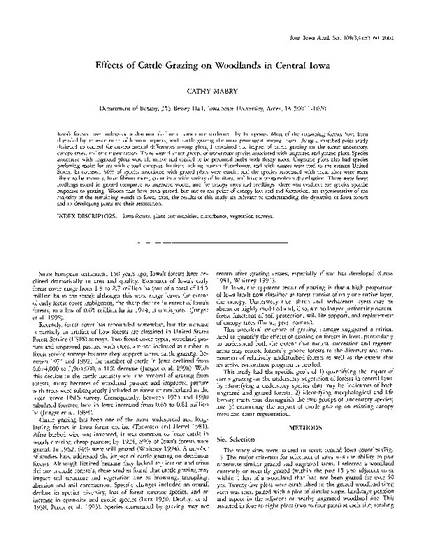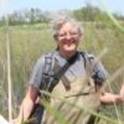
- Iowa forests,
- plant communities,
- disturbance,
- vegetation surveys
Iowa's forests have undergone a dramatic decline in area since settlement by Europeans. Most of the remaining forests have been degraded by an assortment of human impacts, with cattle grazing the most prominent among them. Using a matched pairs study designed to control for environmental differences among plots, I examined the impact of cattle grazing on the forest understory, canopy trees, and tree regeneration. There were distinct groups of understory species associated with ungrazed and grazed plots. Species associated with ungrazed plots were all native and tended to be perennial herbs with fleshy roots. Ungrazed plots also had species preferring moist forests with closed canopies, habitats lacking human disturbance, and with ranges restricted to the eastern United States. In contrast, 30% of species associated with grazed plots were exotic, and the species associated with these sites were more likely to be annuals, have fibrous toots, occur in a wide variety of habitats, and have a cosmopolitan distribution. There were fewer seedlings found in grazed compared to ungrazed woods, and for canopy trees and seedlings, there was evidence for species specific responses to grazing. Woods that have been grazed, but not to the point of canopy loss and sod formation, are representative of the majority of the remaining woods in Iowa; thus, the results of this study are relevant to understanding the dynamics of Iowa forests and to developing plans for their restoration.
Available at: http://works.bepress.com/catherine_mcmullen/10/
